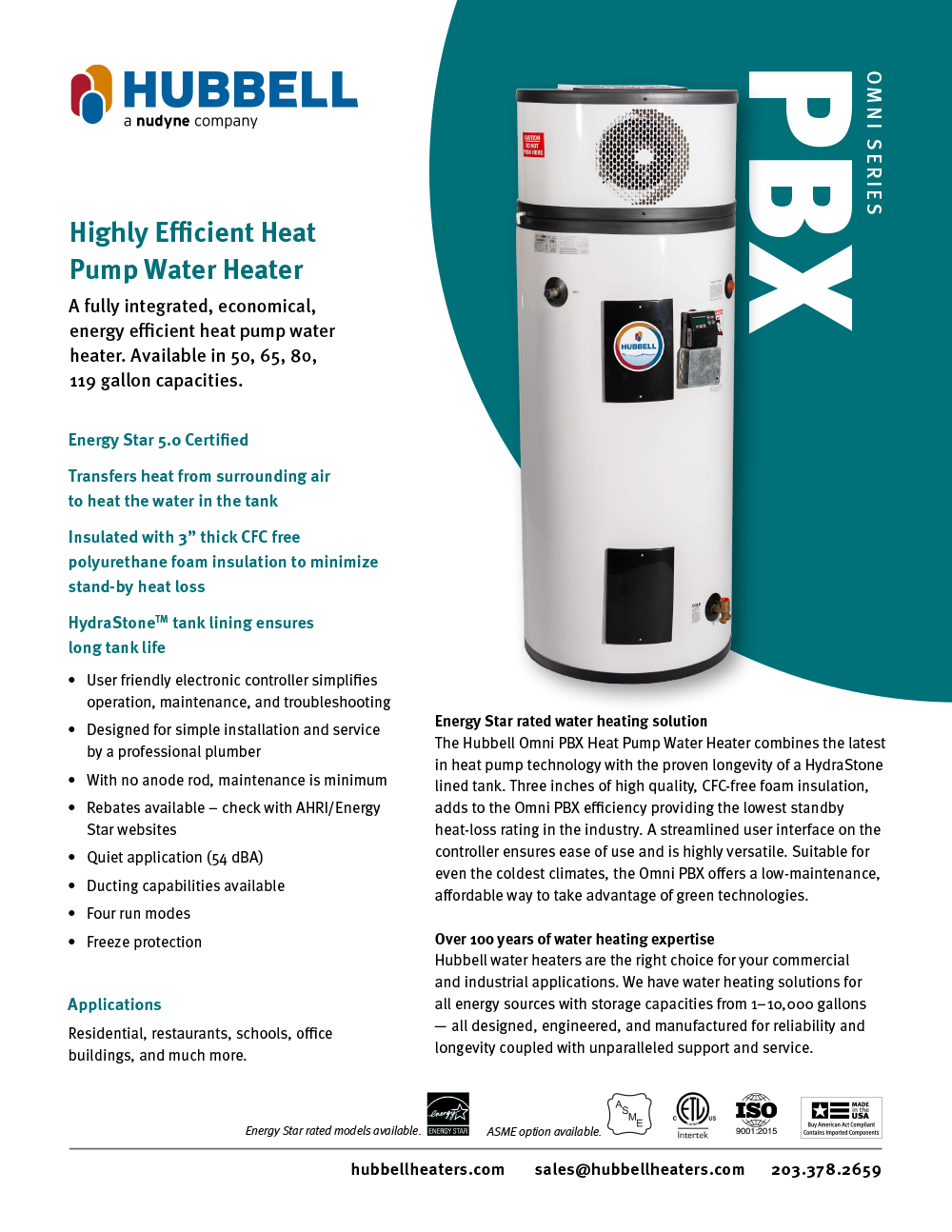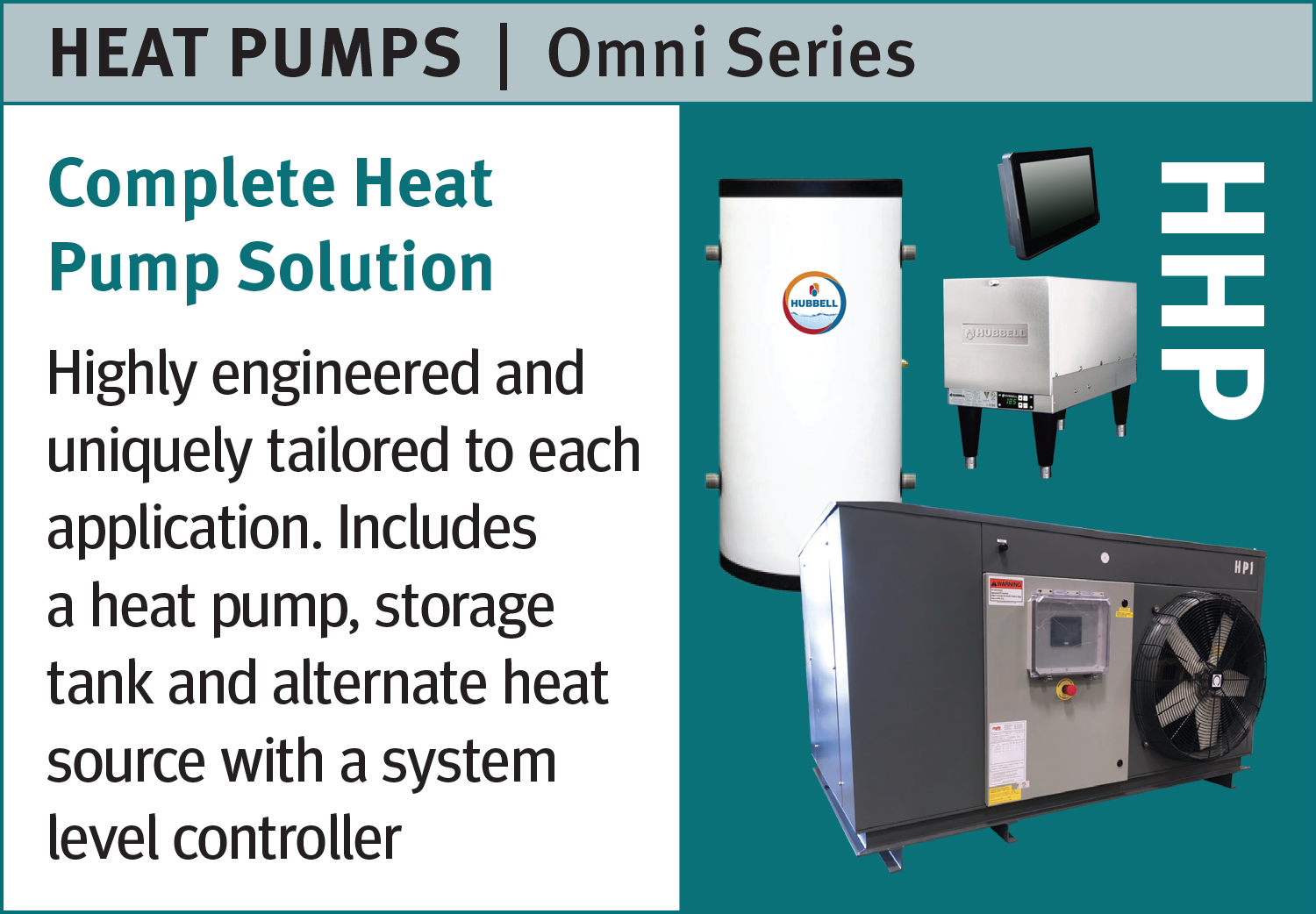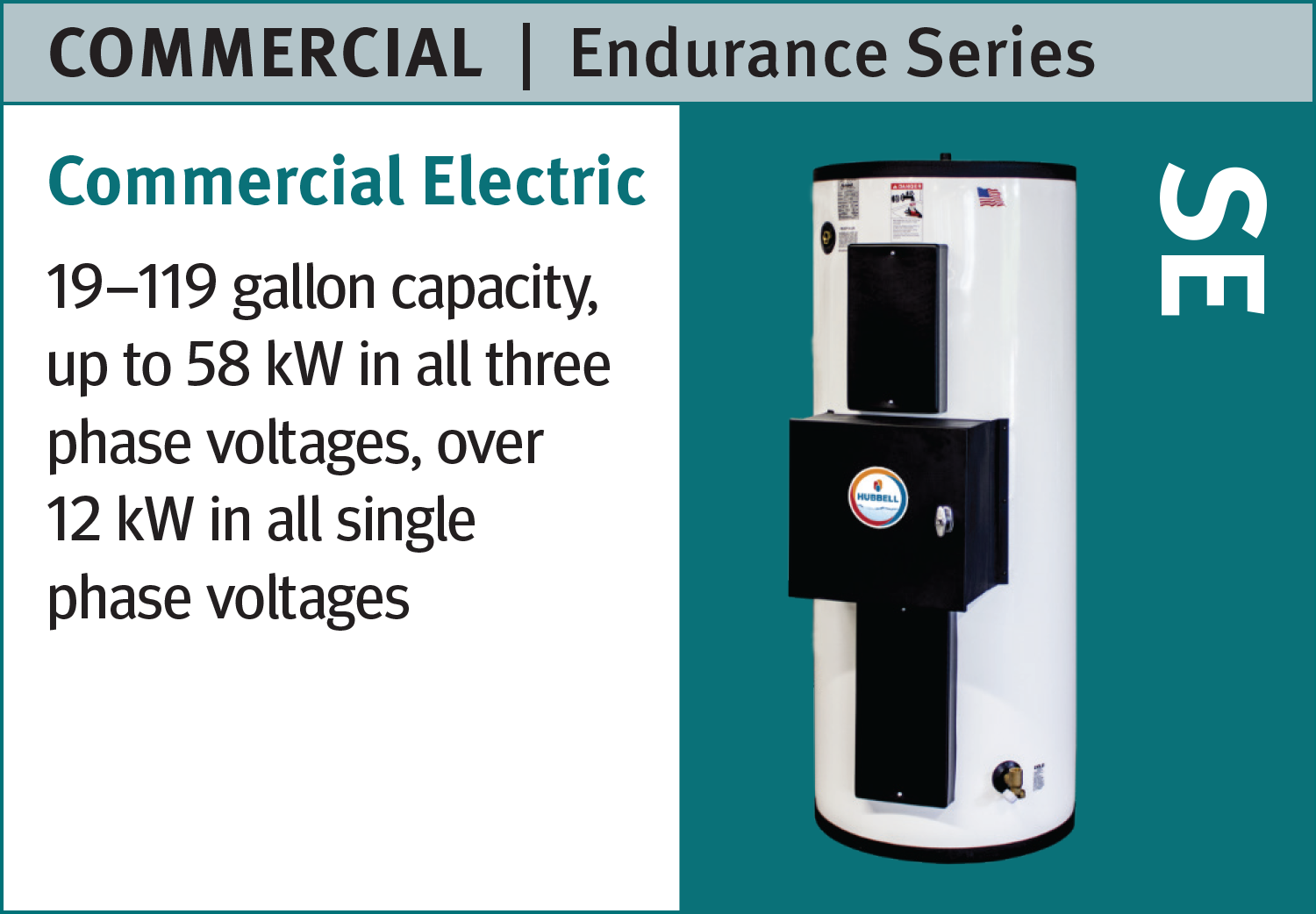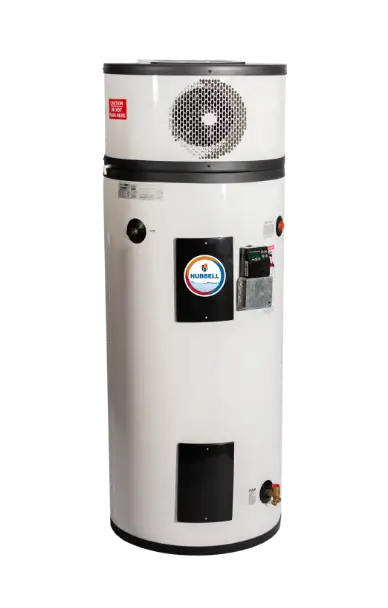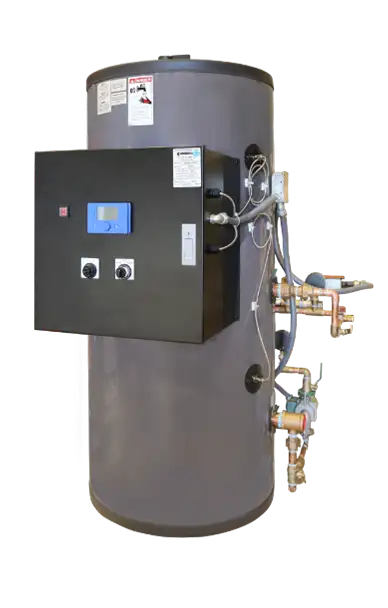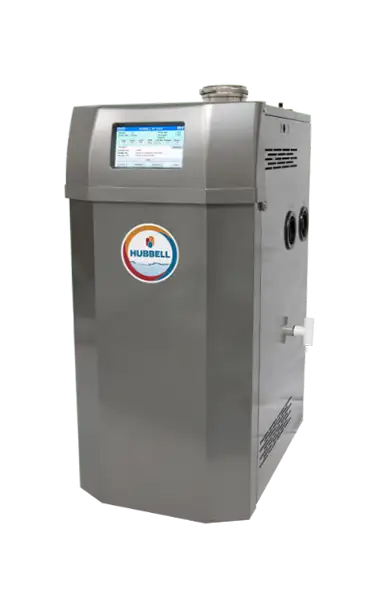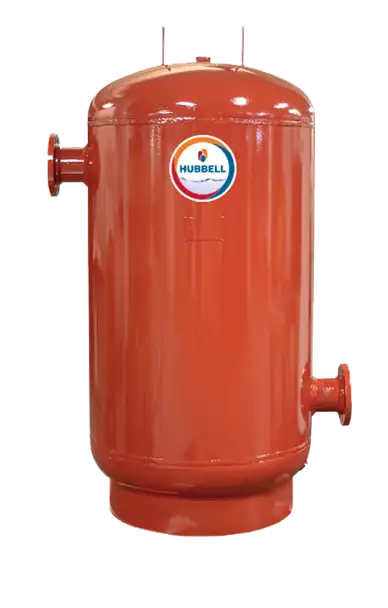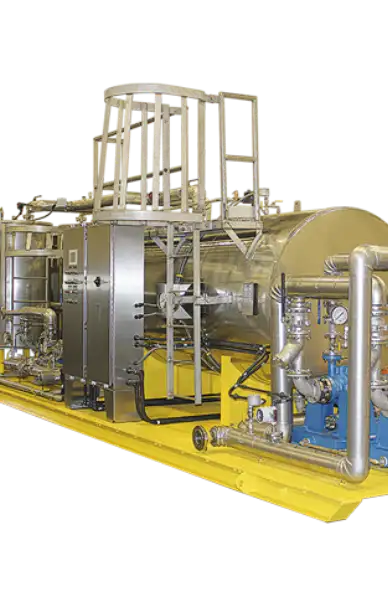Omni Series
PBX
Electric Heat Pump Water Heater
A fully integrated, economical, energy efficient heat pump water heater. Available in 50, 65, 80, and 119 gallon capacities.
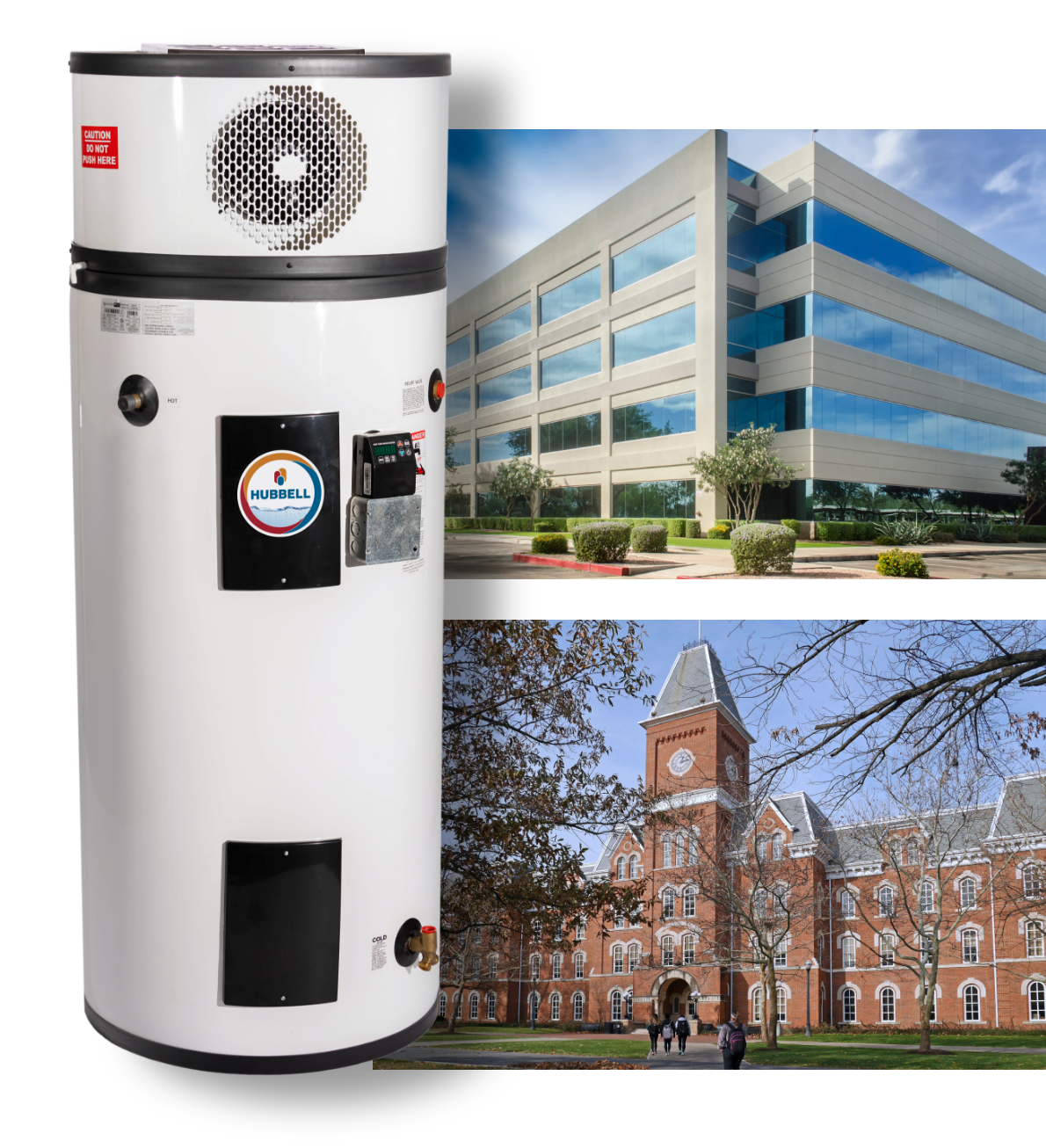
HYDRASTONE CEMENT LINING
INCOLOY SHEATH BACKUP HEATERS
INDUSTRY LEADING EFFICIENCY
PROVEN HEAT PUMP TECHNOLOGY
SIMPLE INSTALLATION
Applications
Residential buildings, restaurants, schools, office buildings, and much more.
Omni Series
PBX
Electric Heat Pump Water Heater
A fully integrated, economical, energy efficient heat pump water heater. Available in 50, 65, 80, and 119 gallon capacities.
HYDRASTONE CEMENT LINING
INCOLOY SHEATH BACKUP HEATERS
INDUSTRY LEADING EFFICIENCY
PROVEN HEAT PUMP TECHNOLOGY
SIMPLE INSTALLATION
Applications
Residential buildings, restaurants, schools, office buildings, and much more.
PBX Overview
Technical Documents
Request Info about the PBX
You might also be interested in ...
Hubbell has a water heater for almost every application. Take a look at other options.

